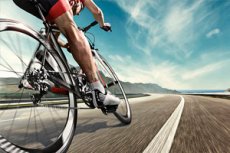Nye publikasjoner
Lange sprintintervaller øker oksygenopptaket i musklene bedre enn korte intervaller
Sist anmeldt: 02.07.2025

Alt iLive-innhold blir gjennomgått med medisin eller faktisk kontrollert for å sikre så mye faktuell nøyaktighet som mulig.
Vi har strenge retningslinjer for innkjøp og kun kobling til anerkjente medieområder, akademiske forskningsinstitusjoner og, når det er mulig, medisinsk peer-evaluerte studier. Merk at tallene i parenteser ([1], [2], etc.) er klikkbare koblinger til disse studiene.
Hvis du føler at noe av innholdet vårt er unøyaktig, utdatert eller ellers tvilsomt, velg det og trykk Ctrl + Enter.

Fysiske aktiviteter som løping, gange, sykling og sprinting er kjent for sin evne til å aktivere muskel- og skjelettsystemet og føre til energiforbruk. Sprintintervalltrening (SIT) er en type sprintøvelse som involverer sykluser med intens trening etterfulgt av en kort hvileperiode. Strukturen av varigheten av trening og hvile kan påvirke kroppens fysiologiske responser på SIT.
De siste årene har det vært økt interesse innen treningsfysiologi for å optimalisere SIT-protokoller. Denne økte interessen har bidratt til anerkjennelsen av effektiviteten til SIT i å forbedre atletisk ytelse og generell velvære, og fremhevet dens allsidighet som et verktøy for å opprettholde helse og kondisjon.
I et forsøk på å fremheve fordelene med SIT, utførte et team av forskere fra Japan, inkludert Dr. Takaki Yamagishi fra Institutt for idrettsvitenskap og -forskning ved Japan Institute of Sports Science og Human Performance Laboratory ved den integrerte forskningsorganisasjonen ved Waseda University, og professor Yasuo Kawakami, som leder Human Performance Laboratory og er medlem av Det idrettsvitenskapelige fakultet ved Waseda University, SIT-eksperimenter med friske frivillige i en nylig studie.
Studien er publisert i tidsskriftet Medicine & Science in Sports & Exercise.
Yamagishi forklarer motivasjonen bak forskningsarbeidet sitt: «Å fastsette minimumsdosen for trening som kreves for å oppnå treningseffekter som aerob kondisjon har vært en av mine viktigste forskningsinteresser. Takket være støtten fra professor Kawakami og andre medforfattere, samt samarbeidet med Waseda University, ble denne unike studien med en mangesidig tilnærming muliggjort.»
Forskerteamet sammenlignet to forskjellige sprintintervalløvelser (SIE) med tanke på total sprintvarighet og sprint-til-hvile-forhold. De analyserte effekten av SIE på fysiologiske og metabolske responser ved å undersøke nivåer av pulmonalt oksygenopptak (V̇O2) og endringer i vevsoksygeneringsindeksen (∆TOI) i lårmusklene. De brukte også magnetisk resonansavbildning (MR) med T2-vektede bilder for å vurdere lårmuskelaktivering.
Forskerne bemerket at SIE20, som involverte to 20-sekunders spurter med 160 sekunders restitusjon, var bedre enn SIE10, som involverte fire 10-sekunders spurter med 80 sekunders restitusjon. Selv om begge SIE-protokollene økte total og perifer oksidativ metabolisme og kjernemuskulaturaktivering betydelig, som demonstrert ved økning i henholdsvis V̇O2-, ∆TOI- og MR T2-verdier, oppnådde SIE20 større perifer oksidativ metabolisme. De fant også at suksessive spurtrepetisjoner i SIE10 ikke korrelerte med større oksidativ metabolisme.

Intervalltrening med sprint kan stimulere gunstige fysiologiske og metabolske responser ved å aktivere muskler og øke oksygenforbruket i vevet. Kilde: Medicine & Science in Sports & Exercise (2024). DOI: 10.1249/MSS.00000000000003420
Yamagishi sier følgende om den praktiske anvendelsen og effekten av denne studien: «I dagens hektiske verden er mangel på tid en stor hindring for regelmessig fysisk aktivitet. Øvelsene som brukes i studien vår tar imidlertid mindre enn 15 minutter å fullføre og gir betydelige helsefordeler.»
Avslutningsvis kan resultatene av denne studien bidra til å fylle viktige hull i SIT-forskning, som for eksempel effekten av minimum sprintvarighet og repetisjoner på aerobe og metabolske responser hos mennesker. Dybdegående forskning på lavvolums SIT kan forbedre treningsprogrammer og treningsregimer.
Yamagishi legger til: «Treningsretningslinjer fra store organisasjoner som American College of Sports Medicine oppdateres hvert femte til tiende år, og vi håper at studien vår kan være en del av den prosessen. Fremtidige studier av SIE kan bygge på funnene våre for å etablere et dose-respons-forhold mellom treningsvolum eller -intensitet og omfanget av treningstilpasninger.»
